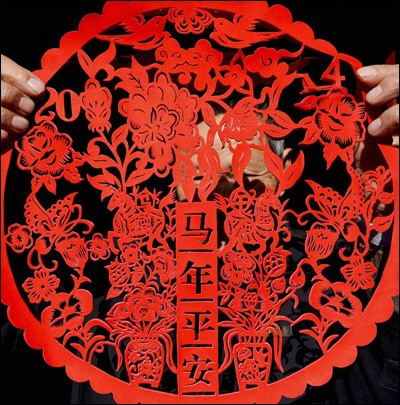The Confucius Institute at the University of Banja Luka organized a workshop on the ‘Chinese Paper Cutting Art’ on Saturday, 24 December 2018, in the premises of the Faculty of Political Sciences. The workshop was organized with the aim to introduce the citizens with the art of paper cutting, its significance in Chinese culture and enable them to learn to cut and make decorations of paper.
The professor from China briefed the participants in this workshop that рaper cut is an ancient art of paper designs which appeared during the Han dynasty in China in the 4th century, when Cai Lun invented paper. It originated from cutting patterns for rich Chinese embroideries and later developed into a folk art. It is believed that these paper designs have a number of distinct uses in Chinese culture, almost all of which are for happiness, prosperity and wealth, which is why they are used during special events like the Chinese New Year, also called Spring Festival.
This type of art has spread from China to the whole world and is today very popular (it is especially popular in Poland, France, Holland and England). Although paper cutting is popular around the globe, only the Chinese paper cut was listed in the UNESCO Intangible Cultural Heritage Lists, which was in 2009. The Chinese paper-cutting was recognized and listed because it has a history of more than 1 500 years and it represents cultural values of the people of China.
Even the famous writer Hans Christian Andersen mastered the skill of cutting paper and he would cut paper while telling his fairy tales and show the audience what he had done. He liked to give away his paper artwork to his friends. Some of his works and how great he was in this art may be seen today in his museum in Odense.

The professor explained that at first glance the paper cutting looks like a children’s game, but that by carefully and skillfully sketching and cutting paper one may create a real work of art. He further explained that paper should be folded 8 times at most, so the final work should have from 2 to 24 symmetrical sides.
Those who took part in this Saturday’s workshop used all their imagination and creativity and made wonderful paper decorations with which they decorated previously made and drawn New Year’s cards intended for children who are getting medical treatment through the Solidarity Fund for Diagnosis and Treatment of Diseases, Conditions and Injuries of Children Abroad, in which they wish them to get well soon in Chinese language.


























Comments